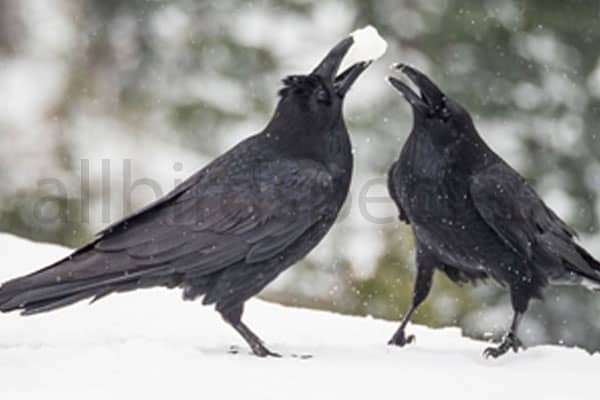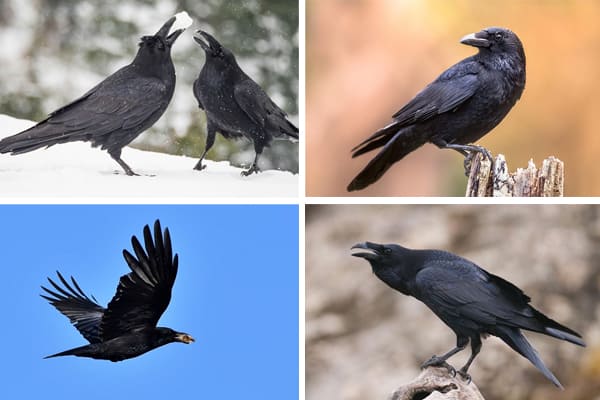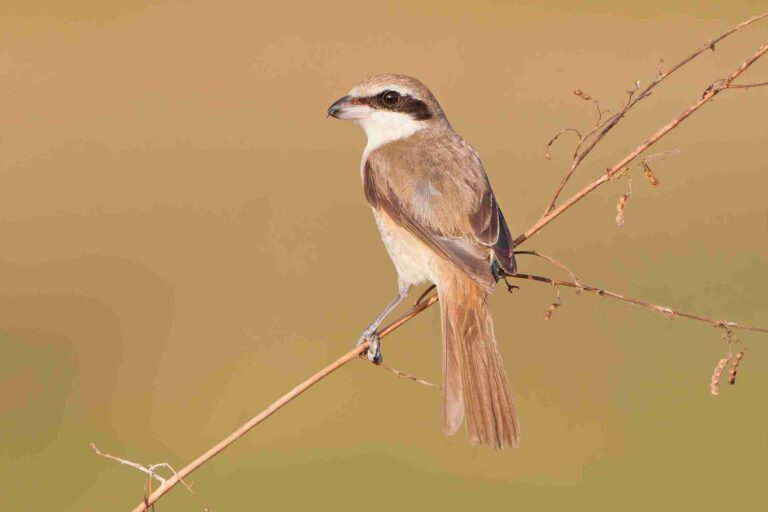Can Crows Talk Like Parrots? Unlocking The Truth
Can Crows Talk, those intelligent and mysterious birds that we often encounter, have long fascinated researchers and bird enthusiasts alike. One question that frequently arises is whether crows possess the ability to talk like parrots. In this article, we will delve into the intriguing world of crow communication and explore the different vocalizations, intelligence, and mimicry abilities of these remarkable avian species.
Key Takeaways:
- Crows have a unique form of communication that involves various vocalizations.
- While crows may not possess the ability to talk like parrots, they can produce speech-like sounds.
- Crows engage in vocal learning, acquiring and imitating different sounds within their environment.
- Communication among crows involves a range of vocalizations, including the famous “caw” sound.
- Crows exhibit remarkable intelligence, with the ability to remember faces and mimic sounds.
The Language Skills of Crows
In the fascinating world of avian When it comes to communication, crows stand out with their impressive language skills, their potential to be a talking crow and ability to produce speech-like sounds like “hello,” “help,” and “talk.” These highly intelligent birds possess a unique form of vocal learning that allows them to acquire and imitate a wide range of sounds.

Crows, like many other bird species, use vocalizations to communicate with their flock members and convey important messages. However, what sets crows apart is their ability to produce speech-like sounds that resemble human language. While they may not be able to engage in complex conversations like humans or parrots, crows are capable of creating distinct vocalizations that convey specific meanings.
Crow vocal learning is an important aspect of their communication repertoire. Similar to parrots, crows have the ability to imitate sounds they hear in their environment. This vocal learning process allows them to acquire new sounds and incorporate them into their vocal repertoire. By observing and mimicking sounds made by other crows or even humans, crows can expand their range of vocalizations.
It is believed that the key anatomical structure enabling crows to produce speech-like sounds is their syrinx. The syrinx is a highly specialized vocal organ found in birds, located at the base of their trachea. It allows for precise control of airflow and sound production, enabling crows to mimic a diverse array of sounds with remarkable accuracy.
In addition to their speech-like sounds, crows also use a variety of other vocalizations for different purposes. These include alarm calls to warn fellow crows of potential threats, territorial calls to establish and defend their territory, and contact calls to communicate with their mates or offspring. Each of these vocalizations serves a specific function within the complex social structure of a crow flock.
Overall, the language skills of crows reveal their advanced level of intelligence and ability to adapt to their environment. Their proficiency in producing speech-like sounds and engaging in vocal learning sets them apart in the avian world, showcasing the remarkable communication abilities of these highly adaptable birds.
You May want to read: Red Birds in Michigan
Communication Among Crows
Communication plays a vital role in the social behavior of crows. These intelligent birds utilize a variety of vocalizations to interact with each other and relay important information within their groups. While crows may not possess the ability to talk like parrots, their vocalizations are rich and complex.
The most recognizable vocalization of crows is their distinctive “caw” sound, which is often associated with their presence. However, crows have a wide repertoire of vocalizations that they use for different purposes. These vocalizations can vary in pitch, rhythm, and duration, allowing crows to convey a range of messages to their fellow birds.

Interestingly, research has shown that crows not only communicate with their own species but also have the ability to understand and respond to some human-like communication cues. They can recognize human faces and learn to associate certain vocal signals with rewards or threats. This suggests a level of cognitive flexibility and adaptability in their communication abilities.
While crows may not have the same vocal capabilities as humans, their communication methods are sophisticated and effective for their social interactions. Through their vocalizations and body language, crows are able to coordinate group activities, establish and maintain territories, and warn each other of potential dangers in their environment.
Overall, the study of crows’ communication sheds light on their ability to mimic human language, providing insight into the talking crow phenomenon. crow communication provides fascinating insights into the complex social dynamics of these intelligent birds. By understanding their vocalizations and communication patterns, we gain a deeper appreciation for the remarkable abilities and social intelligence of crows.
Must Read: Small Birds with Long Beaks
Understanding Crow Intelligence
When it comes to intelligence, crows are truly remarkable creatures. These highly intelligent birds possess exceptional cognitive abilities that are evident in their complex communication strategies. Not only can crows communicate using a diverse range of vocalizations, but they also exhibit the uncanny ability to remember faces and mimic sounds.
Crow communication is a fascinating aspect of their intelligence. These corvids, specifically crows and ravens, engage in sophisticated vocal exchanges that involve various vocalizations, such as caws, clicks, and coos, to convey different messages. Through these vocalizations, crows can communicate with other members of their group, alerting them to potential threats or signaling the availability of food sources.
But what sets crows apart is their aptitude for mimicry. Like parrots, crows can mimic sounds, including human speech. They can imitate a wide range of vocalizations, from car alarms to the human voice. This mimicry not only allows them to communicate with humans but also reinforces their social bonds within their own species.
Furthermore, studies have shown that crows can remember faces. This remarkable ability helps them recognize and distinguish individuals, whether they are fellow crows or humans. This skill is particularly advantageous in social interactions, as crows can remember who has helped or threatened them in the past, enabling them to make informed decisions on how to respond in the future.
“The intelligence of crows goes beyond their communication skills. They exhibit problem-solving abilities, use tools, and display a level of adaptability that is truly astonishing.“
Research has also revealed that crows can solve complex puzzles and use tools to access hard-to-reach food sources. This demonstrates their cognitive flexibility and problem-solving capabilities. Crows have been observed bending wires, fashioning hooks, and even dropping nuts onto busy roads to crack them open. Their ability to innovate and adapt to their environment exemplifies their exceptional intelligence.
Do you Know Interesting Facts About Hummingbirds
The Remarkable Intelligence of Crows in a Table
| Intelligence | Description |
|---|---|
| Crow Communication | Use of diverse vocalizations and mimicry skills |
| Face Recognition | The ability of a talking crow to remember and distinguish individual faces |
| Problem-Solving | Capability to solve complex puzzles and use tools |
| Adaptability | Capacity to innovate and adapt to changing environments |
As we continue to study the intelligence of crows, we gain a deeper appreciation for their remarkable abilities. These birds are not only skilled communicators but also possess problem-solving skills, adaptability, and an incredible memory. The sophistication of crow intelligence is a testament to the intricate nature of the avian world and highlights the importance of understanding and protecting these intelligent beings.
The Anatomy of Crow Vocalizations
In this section, we will explore the fascinating anatomy of a crow, specifically focused on the crow’s tongue behind the vocalizations of crows. The crow’s ability to communicate effectively within its species relies on unique anatomical structures.
The Larynx: Controlling Vocalizations
The larynx, also known as the voice box, plays a crucial role in raven and crow vocalizations. It houses the vocal cords, which vibrate to produce sounds. Crows have a complex larynx that allows them to control the pitch, volume, and tone of their vocalizations.
The Syrinx: A Key to Diverse Sounds
The syrinx is another vital structure in crow vocalizations. Located at the base of the trachea, the syrinx enables crows to produce a wide range of sounds. It is a unique vocal organ found in birds, allowing for intricate and varied vocalizations.
The crow’s syrinx is a remarkable anatomical feature that gives them the ability to mimic not only other birds but also human speech. This versatility in vocal range sets crows apart from many other avian species.
Together, the larynx and syrinx provide crows with the means to communicate through a diverse repertoire of vocalizations. Their mastery of vocal control and range allows them to convey complex messages within their social groups.
To better understand the importance of the crow’s anatomy in vocalizations, let’s take a closer look at the vocal range and the various sounds produced by these intelligent birds.
| Vocal Range | Crow Vocalizations |
|---|---|
| Crows can produce low to high
frequencies using their crow’s tongue. |
Caws, croaks, and raspy calls |
| Varied pitches | Varied alarm calls to communicate
different threats |
| Imitation of human speech | Mimicking words and phrases with
impressive accuracy |
As shown in the table above, crows possess a remarkable vocal range, allowing them to produce various calls and even mimic human speech. This adaptability in their vocalizations contributes to their exceptional communication abilities.
Interaction with Humans and Other Birds
Crows are known for their fascinating ability to interact with humans and other avian species. One remarkable aspect of crow behavior is their mimicry of human speech. These intelligent birds have been observed imitating words and sounds they hear from human beings, showcasing their remarkable vocal abilities. Through this mimicry, crows establish a unique form of communication with humans, bridging the gap between avian and human species.
Not only do crows engage in contact with humans through vocal mimicry, but they also communicate effectively with other birds. Can Crows Talk are highly social creatures, often forming groups, or flocks, that work together to accomplish various tasks. Within these groups, their communication methods play a critical role in coordinating their actions and alerting each other to potential dangers, including the presence of predators. This ability to communicate and collaborate as a unified avian community allows crows to thrive and navigate their surroundings successfully.
The interaction between crows and other avian species is equally intriguing. Crows are known to engage in complex vocal exchanges with different bird species, including exchanges of warning calls or territorial disputes. These interactions demonstrate the sophisticated level of communication that occurs within the avian community. Through their vocalizations, crows establish their presence, assert dominance, and maintain order within the larger avian ecosystem.
Final Thoughts:
In summary, crows, a type of corvid, have the remarkable ability to interact with humans and other bird species through their mimicry skills and complex communication methods, including seeming to Their vocal mimicry establishes a unique bond with humans, showcasing their intelligence and adaptability. Additionally, within avian groups, crows utilize their communication methods to coordinate actions, alert each other to potential dangers, and establish dominance within the avian hierarchy. These interactions highlight the complex and fascinating world of avian communication and the unique role crows play within it.
Frequently Asked Questions
Q1: Can crows talk like parrots?
While crows cannot learn and produce human words and sounds like parrots can, they do possess the ability to mimic certain sounds, including human speech. However, their vocal range and repertoire are different from parrots.
Q2: Can crows remember faces?
Yes, crows have been found to have an impressive ability to remember and recognize human faces. This cognitive skill of a talking crow allows them to identify and remember individuals who have interacted with them in the past.
Q3: How do crows communicate with each other?
Crows communicate with each other through a diverse array of vocalizations. These include the familiar “caw” sound, as well as various clicks, rattles, and alarm calls. They also use body language and visual displays to convey information to their fellow crows.
Q4: How intelligent are crows?
Crows are highly intelligent birds and are known for their problem-solving abilities. They can solve complex puzzles, use tools, Can Crows Talk use observation to learn from others. Their intelligence plays a crucial role in their communication skills and adaptation to their environment.
Q5: What is the anatomy behind crow vocalizations?
Crow vocalizations are produced through the structures known as the larynx and syrinx. The larynx is responsible for controlling pitch and loudness, while the syrinx is a specialized vocal organ located at the base of the trachea. The syrinx allows crows to produce a vast repertoire of sounds.
Q6: How do crows interact with humans and other birds?
Crows are known for their ability to mimic human speech and often form close relationships with humans when provided with consistent positive interactions. In addition, they communicate with other avian species through various calls and behaviors and can form groups to defend territories and alert each other to potential predators.







